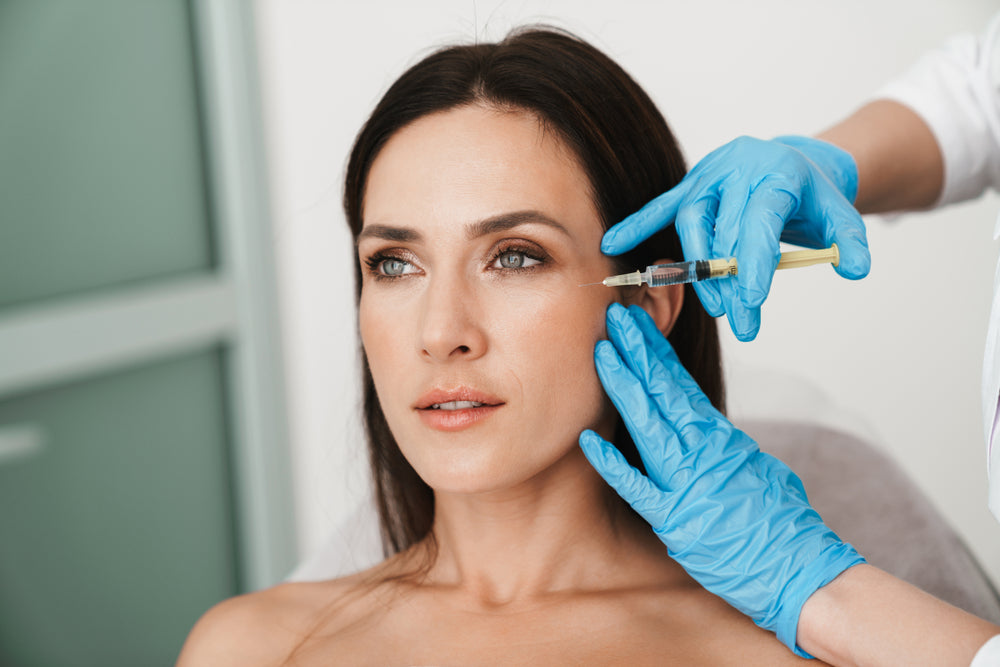
Getting Botox for Crow's Feet - All You Need to Know
Common Causes of Wrinkles Around the Eyes
Wrinkles around the eyes, often referred to as crow's feet, are a natural part of aging. They typically develop due to a combination of intrinsic and extrinsic factors. Intrinsic aging involves the natural breakdown of collagen and elastin in the skin, reducing its elasticity and firmness. Extrinsic factors include repetitive facial expressions like squinting and smiling, which cause the skin to crease and eventually form permanent lines. Additionally, environmental factors such as sun exposure, smoking, and pollution accelerate the formation of these wrinkles by damaging the skin’s structure.
How Does Botox Treatment for Crow's Feet Work?
Botox, a purified form of botulinum toxin, is a popular cosmetic treatment for reducing the appearance of crow's feet. When injected into the muscles surrounding the eyes, Botox temporarily paralyzes these muscles. This relaxation prevents the muscles from contracting and forming wrinkles, resulting in smoother, younger-looking skin.
How much Botox is needed for crow's feet?
The amount of Botox needed for crow's feet varies depending on the individual's muscle strength and the extent of the wrinkles. On average, practitioners use between 10 to 12 units of Botox per side. It’s essential to have a consultation with a qualified professional to determine the precise amount needed for optimal results.
Suitable Candidates for Botox
Botox for crow's feet is suitable for most adults who are in good health and have realistic expectations about the treatment outcomes. Ideal candidates are individuals who have noticeable lines around their eyes when smiling or squinting but want a non-surgical solution to reduce these wrinkles. However, pregnant or breastfeeding women, individuals with neuromuscular disorders, or those with allergies to any Botox ingredients should avoid this treatment.

The Botox Cosmetic Procedure
The Botox procedure for crow's feet is quick and minimally invasive. During the treatment, a trained practitioner uses a fine needle to inject small amounts of Botox into specific muscles around the eyes. The entire process usually takes about 10 to 15 minutes. Patients can expect to feel slight discomfort, similar to a pinprick, during the injections. There is no significant downtime, and most people can resume their normal activities immediately after the procedure.
Side Effects of Botox Around the Eyes
While Botox is generally safe, some side effects may occur. Common side effects include bruising, swelling, or redness at the injection sites. These typically resolve within a few days. In rare cases, patients may experience drooping of the eyelid or asymmetry in facial expressions. It's crucial to choose a skilled practitioner to minimize these risks and ensure a successful treatment outcome.
Expectations for Botox Crow's Feet Treatment
How long does Botox last for crow's feet? The effects of Botox for crow's feet usually become visible within a few days after treatment, with full results appearing around two weeks. The smooth, youthful look can last between three to six months, after which the muscle activity gradually returns, and the wrinkles may reappear. Regular maintenance treatments are necessary to sustain the results.
How painful is Botox for crow's feet? Botox injections for crow's feet are generally well-tolerated. Most patients describe the sensation as a mild discomfort or a pinprick feeling. The procedure is quick, and any discomfort typically subsides immediately after the injections. Some practitioners apply a topical anesthetic or ice to the area before treatment to enhance comfort.
Alternative Treatments for Crow's Feet and Other Facial Wrinkles
While Botox is highly effective for treating crow's feet, there are alternative treatments available for those who prefer different approaches or seek complementary solutions.
What is better for crow's feet, Botox or fillers?
The choice between Botox and fillers depends on the specific needs and desired outcomes of the patient. Botox is ideal for dynamic wrinkles caused by muscle movements, such as crow's feet. Fillers, on the other hand, are better suited for static wrinkles and adding volume to areas that have lost fullness due to aging. Some individuals opt for a combination of both treatments to address various types of wrinkles and achieve a more comprehensive rejuvenation.
In addition to Botox and fillers, other treatments such as laser resurfacing, chemical peels, and microneedling can also improve the appearance of crow's feet by promoting collagen production and enhancing skin texture. Consulting with a dermatologist or cosmetic surgeon can help determine the best treatment plan tailored to individual skin concerns and aesthetic goals.
Conclusion
Botox offers a reliable and effective solution for reducing the appearance of crow's feet, providing a smoother and more youthful look around the eyes. Whether choosing Botox, fillers, or alternative treatments, consulting with a qualified professional ensures that each patient receives a personalized approach that aligns with their beauty goals and health considerations. Regular maintenance and a commitment to overall skin health can help prolong the youthful effects and keep crow's feet at bay.
Ready to achieve a youthful, refreshed look? Schedule an appointment at one of our Skin Spa Centers today! With multiple locations available, finding the nearest one is easy. Visit our Location Page to find the closest Skin Spa Center and book your consultation. Let our team of experts help you reveal your best self!
